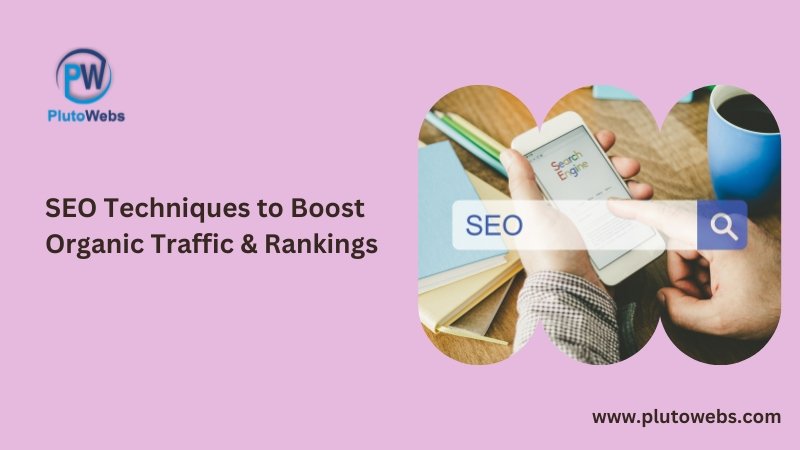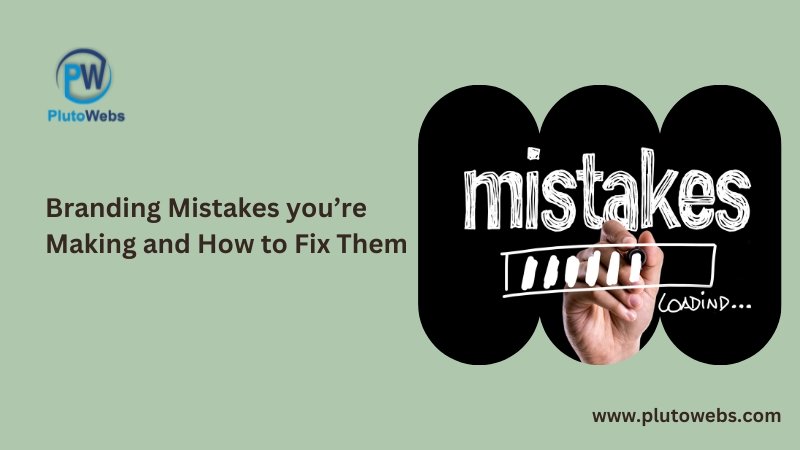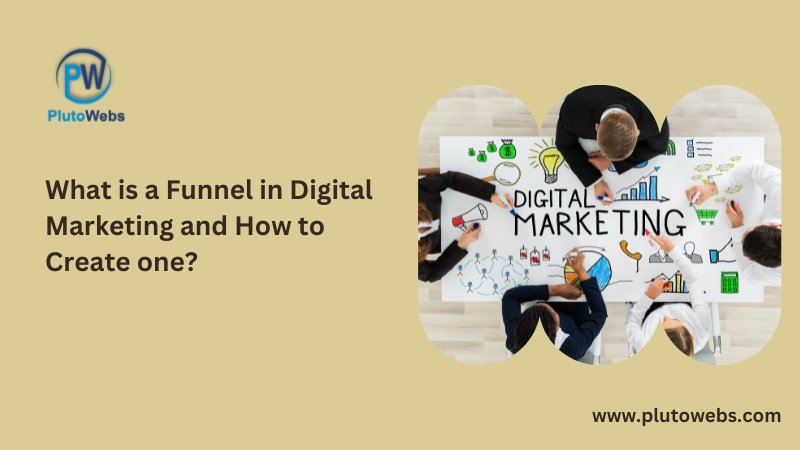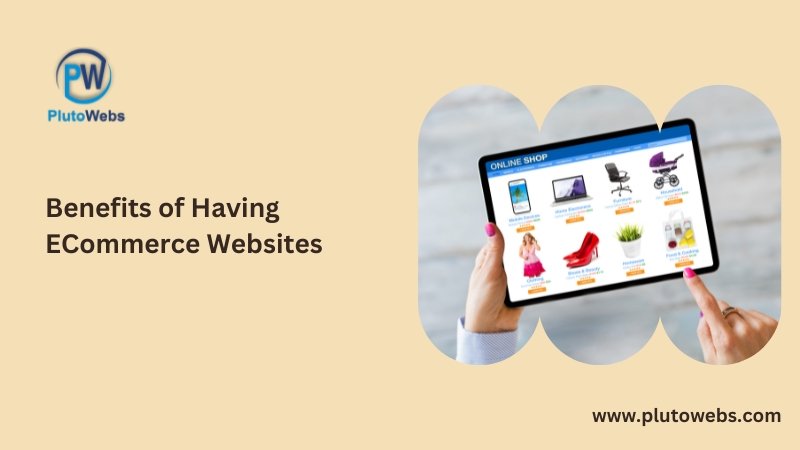SEO Techniques to Boost Organic Traffic & Rankings

How to Make Your Organic SEO Efforts More Effective For the purpose of attracting traffic to your website, having your web pages rank highly in Google’s organic search results for significant keywords can be extremely beneficial. Here are some fundamental tactics to help you raise your organic search engine rankings, even if Google is continually changing its search engine algorithm. Establish a Keyword List It is unrealistic to believe that you will appear first in Google for every keyword associated with your sector. Securing high organic ranks for your most targeted keywords should be your objective. Both marketing and management will have to put in work on this activity. Make a list of keywords based on how customers could search for your goods and services, analyse the traffic and competitiveness for each phrase using well-known tools. The sweet spot is between high volume and low to medium competition keywords because they are simpler to rank for and have a significant potential for traffic. Additionally, by using AI-enabled conversation analytics solutions, you may discover how clients genuinely discuss your items. Target Words That Complement Your Intent The next step is to match your top keywords to search intent once you’ve determined what they are. Google states that there are three different categories of search intent: Informational: This type of search shows that the user is looking for advice, explanations, or how-to articles on a certain subject. “How to change a tyre” is an illustration of a query that is informational. Transactional: This type of search implies that the user wants to buy something. The purchase of new tyres is an illustration of a transactional inquiry. Navigational: This type of search shows that the user wants to go to a particular website or locate a particular seller. “Monro tyres” is an example of a navigational query. The trick is to figure out which purpose category each keyword belongs to and then provide content that meets their demands. For instance, if someone searched “how to change a tyre,” you would write a particular post with pictures demonstrating the procedure. On the other hand, if a user searched for “buy new tyres,” you would develop a product page with all the information they would need to make a purchase, including reviews, product details, an online shopping cart, and so on. Organic Rankings Will Favor Good Content Always keep in mind that generating high-quality content that piques attention, encourages readers to share it and link back to it, and compels them to do so is essential before you get into some of the more technical approaches to increase SEO ranking. Since Google significantly favours content virality in its ranking algorithm, good content has the best chance of going viral. Invest in good authors, quote credible sources (websites with high domain authorities) to support your material, and make sure your content complies with Google’s requirements for high-quality content. The Content should Include your Target Keyword and Keyword Variations Using a keyword is the greatest strategy to gain visibility for it. Since early placement might be an indication of relevance, you should include relevant keywords early in your page titles, headlines, and body text. Throughout your material, you should frequently use your focus keywords, but never at the price of strong writing. Google’s algorithm has gotten good at detecting “keyword stuffing” and penalises websites that overuse keywords in ways that make reading difficult. By reading your material aloud, you may check if your usage of keywords seems natural or odd, which can help you avoid being punished for “keyword stuffing.” You can fix this by substituting secondary keywords for the primary keyword that you want the site to rank for. Secondary keywords are crucial because they enable you to metaphorically cast a wider net into the sea of search engines. Secondary keywords ought to share the same intent as your primary keyword and be closely related to it. For instance, if we were to produce an article about “healthy dog treats,” we might also include secondary keywords like “low-calorie dog treats,” “organic dog treats,” “best dog treats for weight management,” etc. All of these keywords support the article’s main topic and keyword while also giving it more depth. Now that we have an optimised page that is helpful to that audience, we may be found when someone searches for any of those keywords. Optimise the Titles of your Pages An element of a web page is defined by its <title> HTML tag, which also serves as a brief summary of its contents. The top frame of the majority of web browsers for that page and in tabs displays the first line of hyperlinked text that Google displays in their organic search results. This is a vital component of on-page SEO, according to Google’s algorithm. Keep your page names to 70 characters or less because anything longer will be abbreviated when included in Google’s organic results. Your title should contain your critical keywords, preferably at the start. Consider adding your firm at the conclusion if you have extra room to do so to promote brand recognition. Mobile Site Optimization Google first declared that it would start utilising mobile-friendliness as a ranking factor in 2015. This resulted in the infamous “Mobilegeddon,” which saw businesses scurry to optimise their sites for mobile devices. Since then, Google has been gradually elevating the significance of mobile-friendliness in its results; in 2020, it made the switch to a mobile-first paradigm, elevating mobile performance above desktop performance in its algorithm. The following are some suggestions for mobile website optimisation: Use Google’s mobile-friendly tool to evaluate your website. Because fingers come in diverse sizes and might easily make mistakes, designs for touch are preferred. Make sure that your CTA buttons are mobile-friendly. Adapt your pop-ups for mobile platforms. Switch on accelerated mobile pages (AMP) Utilize caching Reduce the size of your photographs to speed up loading Understanding how users interact with your website on mobile will help you make the appropriate adjustments. It’s
Branding Mistakes you’re Making and How to Fix Them

For your company to continue to expand and be seen, you must develop your brand. However, if you don’t have a strong brand identity and brand strategy, it’s simple to make branding mistakes. You may develop a brand without sacrificing your company’s credibility by correcting these typical branding errors. Learn how to improve your brand strategy, authenticity, and execution by avoiding these typical branding blunders. Lack of a Branding Strategy This seems to be a given. Some might believe that as long as they are delivering value to a devoted audience, branding will take care of itself. When tactical pivots must be made, not having a clearly defined brand strategy becomes troublesome. For instance, when a brand doesn’t live up to expectations, when the leadership changes, or when a new competitor enters the market. When this happens, the effects of the brand’s lack of a north star are most severe. You can handle change and know when to invest if you are aware of your brand’s distinctive solution, goal, vision, projected path, and audience. The Important Parts of a Brand Strategy To enhance your customer mission and audience awareness, take into account these questions as you build your brand strategy. i) Purpose, vision, and essential values of the brand ii) How the company goes about entering the market Who would make a good audience? How does the brand stack up against the competition and specifically address the needs of the target market? How will this brand be found in the marketplace by the target audience? iii) The brand’s tactical activation components The character of the brand How the brand interacts with and appeals to the public once it has gained awareness. Not Spending enough on Branding Only you can choose the ideal blend of direct marketing and brand recognition required to meet your immediate and long-term goals. The strength of your company and the development of your brand should be important elements. If you’re thinking of cutting back on your brand spending due to impending economic uncertainties, reconsider. In fact, powerful leaders would argue that now might be the ideal time to launch an offensive. You will have an even greater chance to distinguish yourself as a thought leader if you seize this opportunity when others choose to slow down their awareness spending. To ensure that your brand and its value are top-of-mind, now is the time to make audacious decisions to get your name into earned media, submit for industry awards, and step up engagement with your current customers. Excessive Focus on Brand Design Elements An effective logo and vibrant colours can do wonders for a brand. But let’s be honest, the heavy lifting is done by the experiences that follow. Your website, your store, if you have one, your content and media assets, and your staff members who interact with customers are a few examples of these. Here, it’s necessary to exercise caution so as not to focus primarily on brand identity design and neglect to provide other crucial brand components the attention they require. Ignoring the Value of Your Brand’s People One strategy is to make a map of all the encounters your audience has with people associated with your brand, whether they are with the front desk customer service employees, the cleaning crew, or the business president. Every interaction should be in line with your brand, which calls for providing ongoing coaching and training to promote staff best practices. You can also neglect the role of spokesmen. You could be the undiscovered asset your business needs to develop its brand. It may be more effective to market you as a thought leader to develop the brand, increase awareness, and spur growth. Individuals want to buy from people, which is why. In most cases, what counts most is the person behind the brand and the relationship. Find opportunities to use a leader or leaders who can establish enduring authority and who embody the values of your brand to bring your brand to life. Choosing Trends Instead of Brand Authenticity This one is enormous. How frequently do people bring up a fresh concept during leadership talks that they learned about through reading about another company implementing it or that exemplifies a popular consumer trend? It goes without saying that you should keep an eye out for new trends that could affect your business. Additionally, there are occasions when it makes sense to adopt a good idea that is consistent with your brand, but it is always a good idea to consider whether doing so will come across as genuine and true to your brand’s values. This brings up the first typical branding error once more. To act as that north star, you must have a brand plan in place. Not Changing Your Brand Strategy Yes, a brand’s best friend is consistency. To ascertain whether the brand strategy is still necessary or if it needs to be developed, it is occasionally necessary to test and develop it. Every year, there will be little adjustments that are worthwhile making to make sure the brand strategy develops alongside the market, audience, and the brand itself. Even if not a single word changes, I advise a brand strategy checkup every year. That presents a chance for reinforcement, at the very least. You might make more than a small shift when a significant environmental or brand moment happens. Don’t be reluctant to succeed. A reliable outside source can assist you in identifying opportunities or misalignments that may be challenging to detect from the inside out. Underestimating the Chance to Leverage your Brand to Express an Opinion. The modern consumer is more keen to buy from a company that aligns with their values and worldview. Make it clear to your audience what you and your brand stand for because they care. Even locally, you can seek for chances to stand out in ways that are consistent with how your brand enhances the environment around you. You can
Why AI-Generated Content Marketing Won’t Fully Replace Humans (Yet)

Pic Courtesy: freepik The idea of having content produced by artificial intelligence (AI or neural networks, specifically) may seem like a pipe dream to any manager who has had writers completely miss deadlines or even the mark. A completed post or page is in the hands of an overworked marketer after a few keystrokes and the entry of a few key phrases. However, technology is not a panacea for all of society’s ills. Although artificial intelligence is here to stay, it doesn’t seem likely to replace all human employment. Already, AI is Creating Thousands of Articles Though many of us view AI as a technology of the future, organisations like data science and software business Automated Insights are now at the forefront of the development of AI-generated content. The Wordsmith platform from Automated Insights has been utilised by The Associated Press to create 3,000 quarterly earnings reports each quarter. The real deal? These admittedly uninteresting financial or statistical-based pieces are now put together by an automated system, which makes fewer mistakes than the reporters who previously did it. In addition to authoring, content automation has been effective in locating the most well-liked connected pieces. Automation and machine learning promise to locate these components and then use algorithms to examine interaction, platform, time posted, and other factors. In order to create a similar, effective piece of content, it can examine the most well-read articles and mimic their tone, sentence structure, and subject. Could artificial intelligence and neural networks provide a solution to the time crunch that many content marketers experience? What Should an Unskilled Content Marketer Do? You may have heard that over the course of the next 20 years, many professions will become obsolete due to robots, automation, and software. Truck drivers, financial and insurance analysts, and bank tellers might all be replaced by autonomous vehicles, software, and ATMs. Will content marketers be the next to get fired? The majority of copywriters learned the “catch them with emotions; convince them with facts” methodology for all writing intended to interest readers, not just for persuasive sales writing. When used in the right context, persuasive marketing language taps into emotions including want, excitement, grief, fear, envy, greed, and more. It also makes use of word play, a quick move that appears to be still beyond the computational grasp of neural networks. Humans won’t bother opening emails or reading blogs as more content is created by machines. Email, social media, and content marketing all rely largely on interpersonal relationships. On their digital platforms, individuals want to engage with other people, not read manufactured sentences put together by an algorithm. Throughout the day, people check their email and social media feeds to feel human. A monotonous, computer-dominated day is made more enjoyable by Facebook’s status updates and kitten videos. Businesses run the risk of automating blog posts, articles, web pages, and even email newsletter content. We’ve discovered that the material that performs the best is driven by passion, a distinctive voice, and an extraordinarily original point of view. Marketers Can’t Be Completely Replaced by AI Humans occasionally put artificial intelligence to the test to see whether it can be as clever and insightful as their fellow colleagues in content marketing. The outcomes could shock you. Even while proverbs make perfect sense to us, a system that just works with ones and zeros finds it difficult to code the personification and other clever literary devices that give them their cool factor. After all, a writer’s word choices, ability to connect with readers, and avoid grammatical errors are all influenced by a lifetime’s worth of social contacts and experiences. However, neural networks have made enough development to be able to play chess better than a champion, drive vehicles, and compose music. Is writing really that distinct from those other activities? However, there is room for AI Content to Succeed The simple conclusion is that algorithms like Wordsmith heavily rely on formulaic source material to produce the millions of articles they produce. Do you understand how a quarterly report is calculated? goal description of Program/Initiative conclusion anecdotes append Income Statements, Cash Flow, and Balance Sheets Description of Program/Initiative Objective Anecdotes Conclusion Append Income Statements, Cash Flow Statements, and Balance Sheets A spreadsheet has each of the aforementioned components. The neural network places each element in its proper location and adds a little fluff to stitch the pieces together by modeling after the human-generated template (perhaps Q1). As it progresses from quarter to quarter for each organisation, it also significantly relies on the thesaurus for some useful synonyms. The content Wordsmith creates for Yahoo and Comcast is also formula- and figure-based. Again, depending on the phrasing chosen to seem novel in each iteration, the opening sentence, transition sentences, and conclusions can be encoded into a neural network. Undoubtedly, AI-produced content has its place. By taking on the responsibility of creating the frequently feared first draught, it might even be doing a great service for content writers and even journalists. Any competent journalist or content creator may appreciate an AI presenting the information in a clear and logical manner, freeing the reporter to add flourishes, draw inferences, and connect the dots to related pieces and even societal patterns. Even those at the Associated Press who manage the AI-generated quarterly reports aren’t quite ready to do away with live, active feedback on those dreary pages. In actuality, the usage of Wordsmith has not led to the firing of any writers. Most authors are eager to provide more details, but time and financial constraints prevent them from making sweeping claims that would greatly improve the article. AI systems might be able to assist. Don’t be afraid of AI, content marketers; embrace it as a helping hand Because of the sci-fi genre and the “if it bleeds, it leads” mentality in the media, AI has been made to sound frightening. Don’t let the headlines about AI snatching content jobs concern you, either. Marketing news is just as guilty of invoking
What is a Funnel in Digital Marketing and How to Create one?

What is a Digital Marketing Funnel? If you want to succeed in your online business, then you need to create your online marketing funnel at this very moment. The step that a user takes to move from being an online explorer or a researcher to a full-fledged customer is regarded as a Digital Marketing funnel. The main goal of a Digital m/arketing funnel is to shoot qualified traffic to the top and optimise them with the help of content marketing and other scaffolding forms, to ultimately convert them into potential customers. So in all a Digital Marketing funnel is a strategic and visual representation of the steps taken by a customer in a whole path of journey, right from realising their issues, till they are converted into potential buyer or customers. Marketers all over the world have granted these steps widely and they are using them now so that in their marketing actions, they can gain huge success. If you want to achieve success in your marketing campaign, then you are recommended fully your marketing actions to better segments, which are based on the messages and the ads that you were doing your best to putting it forward to your audiences. Why do you Need a Digital Marketing Funnel? Most marketers suffer a huge loss in a paid campaign, especially in social media marketing. On the other hand, many of them gain a very good ROI (Return on Investment). Do you know why? It is because until and unless you have a healthy foundation, you cannot gain better results by recklessly throwing money and distributing the budgets simply on paid ads. The firms who are investing in marketing actions need to have a positive and proper ROI, by knowing themselves properly and what they need to do. You can achieve many opportunities at the platform and time that you prefer by helping attract your brand messages to your potential customers and conversing with them directly. All these are because of the Digital marketing funnel as it helps you to make you understand your target audiences. After you have known your audience, you can make your content personalised easily on the stage of the customer in their journey. There is no doubt that personalisation is loved by all. Enhancing personalisation can be helped by a proper Digital marketing Funnel where you can do copywriting and create your content easily focusing on your audience. When you are throwing your budget into various Digital marketing channels, it is for sure that you will receive a very good ROI for every penny spent by you. How to Create a Digital Marketing Funnel and that too a Successful one Here are some steps to create an effective and successful digital marketing channel. Define Your Audience When your e creating your Digital marketing channel, the first thing that you need to keep in mind is that you have to define your audience. You need to know your customers and their needs and demands, and how well you can fulfill all these things and serve their purpose or desire. You can create your customer profiles once you get to know the target market and it will help you to make the targeted messages and content which will cope with them. To determine the best channels and the content type to reach to you, you can use this information to use them reach you. Research your Competition So now you know your target customers and have a proper idea about your offerings to them, now it’s time to research the competitors around you. What are your competitors doing that is both working and not working and what different can you perform to differ from your competitors’ work all you have to think about. The main thing that you have to do is to learn and tweak your funnel so that it can be an effective one. You should use your competitors’ works as inspiration and you should not blindly copy their works. You simply don’t need to reinvent it, you simply have to make it much better. Set your Goals an Achievable one Now that you have n idea about digital marketing funnels, and now it’s time to set some achievable goals. So the goals that should be set should be based on the activities of both you and your customers, like signing a newsletter, buying products, downloading white apter, and many more. Once you set your goals, you need to make a plan of action that will help you to achieve them. All these plans should include all the steps that are required right from the begging to the end, right from creating unique and relevant content to convincing your users to click through your websites. It is also very important to create a proper timeline to create each of the steps so that you won’t be in problem. Content Strategy creation to Solve the Query of your Customers So now you got to know the different stages of a digital marketing funnel. Now it is time to make a content strategy to convert your leads to your customers. That means you have to create content that is relevant and useful for your target audiences at each stage of the Digital Marketing funnel. In the stage of awareness, your main aim is to capture your customers’ attention and make them introduce to your service or products. Nest is the purchase stage where your main aim is to make your potential customers make convinced in buying your products or services. That means you need to create contents which are effective and inspires confidence. You can perform this by creating product demos, testimonials, pricing pages, webinars, etc. Design your Website which will Convert Now you have a good idea for creating a proper and effective Digital marketing funnel. Now it’s time to design a website. You must keep in mind that the main aim of your website is converting your visitors into your leads, so you also have
Benefits of Having E-Commerce Websites

E-Commerce is a word, which is commonly used to define any kind of business dealing that includes the passing of information through the Internet. In the last era, we have seen e-Commerce websites working on the Internet. So, the question arises what is motivating this new development and what are the supposed benefits that are attracting so many industries to create e-Commerce websites? Some of the advantages of E-Commerce websites are explained below: 1- Increase customer’s trust: A beautifully designed and creatively developed website generates trust for your clients. They know it very well that if you take care of your website with proper attention and actively than you must treat your clients with the similar technique. 2- Accessibility & Easiness: There are many people in the world for whom, e-Commerce converts one of the favorite ways of shopping because the found online shopping an easy and convenience. They are permitted to purchase goods or services from their home at any time. The greatest thing about it is purchasing opportunities that are rapid, appropriate and user-friendly with the capability to transfer funds online. Because of its accessibility, buyers can save their lots of time and money by searching their goods easily and making buying online. 3- Fascinate New Clients with Search Engine Visibility: As we know that physical marketing is the route by branding and relations. But, online marketing is also motivating by traffic that originates from search engines. For clients, it is not common to follow a connection in the search engine results and visit on an e-commerce website that they never heard of. More Search Engine Visibility will attract more people to your e-commerce website. 4- Keep Birds Eye on Buyers’ Buying Habit: E-commerce traders can effortlessly keep a continuous eye on buyers’ buying habits and comforts to adapt their suggestion suit to buyers’ desires and this is the best thing of e-commerce. By satisfying their requirements continuously, you can increase your continuing relationship with them and build long-term relations. 5- Selling Products globally: If you are running a store, it will be bounded to the geographical region for which you can provide service, but on the other hand with an e-Commerce website, you can sell your goods and services globally. The complete world is your playground, where you can trade your whole variety of goods without any geographical restrictions. Furthermore, the remaining restriction of geography has dissolved by m-commerce that is also known as mobile commerce. 6- Services provided 24*7/365: E-commerce traders can enjoy that store will remain open 24/7/365 because they can run e-commerce websites all the time. This is a way to increase their sales by increasing their number of orders. Though, it is also helpful for buyers as they can buy products when they need no matter whether it is morning or midnight.
